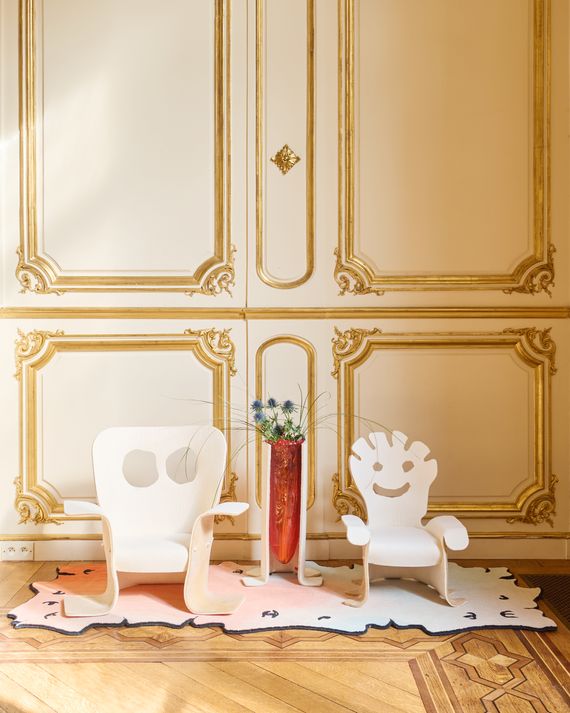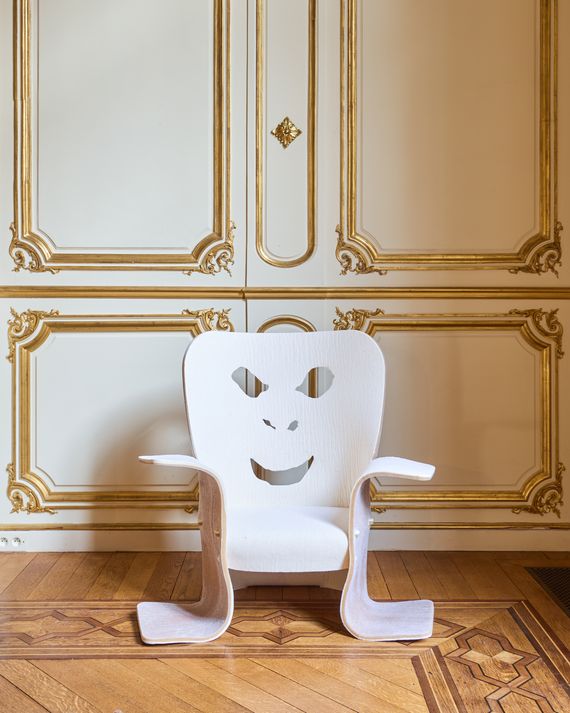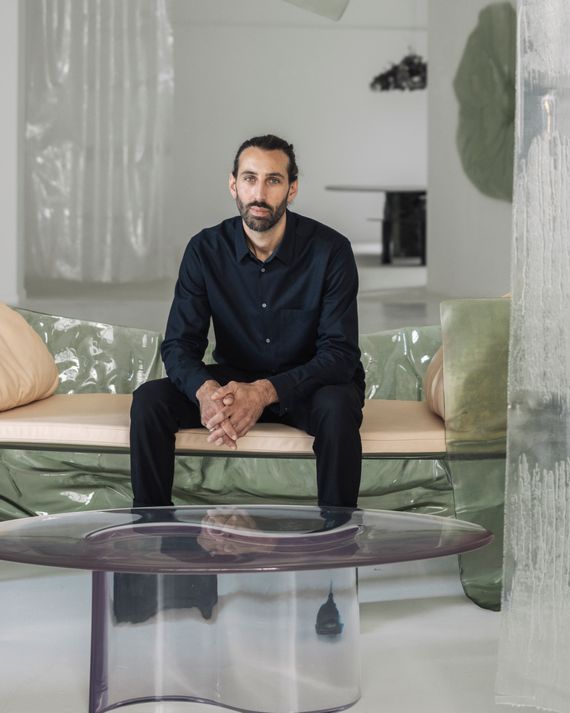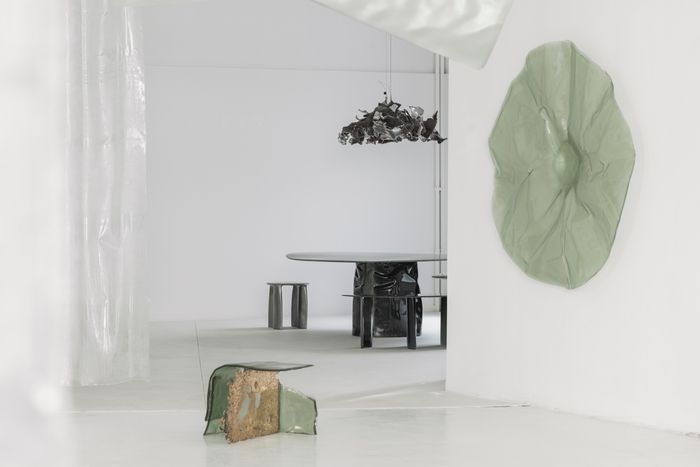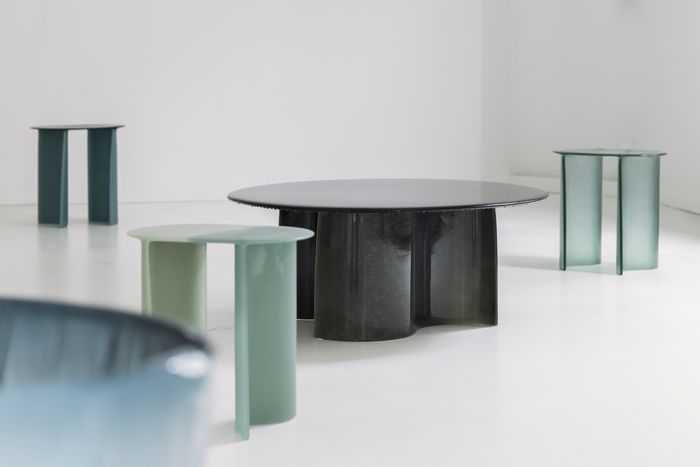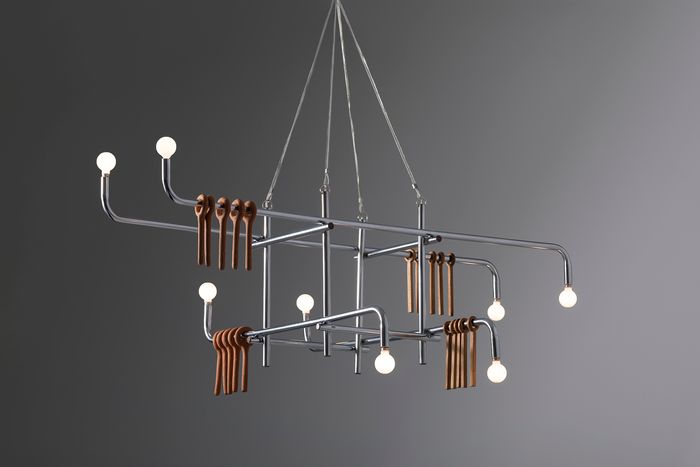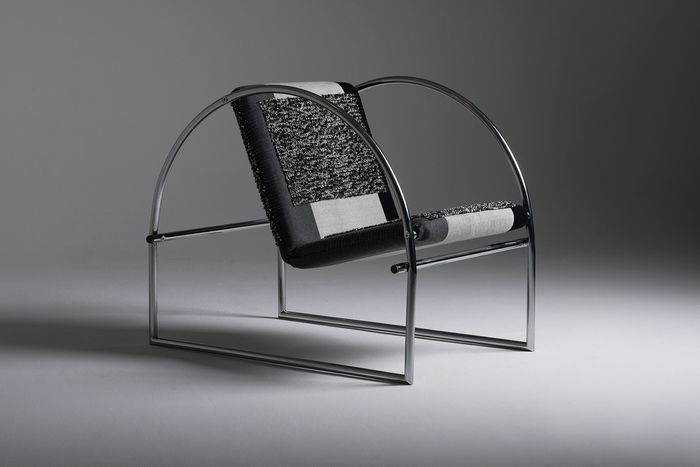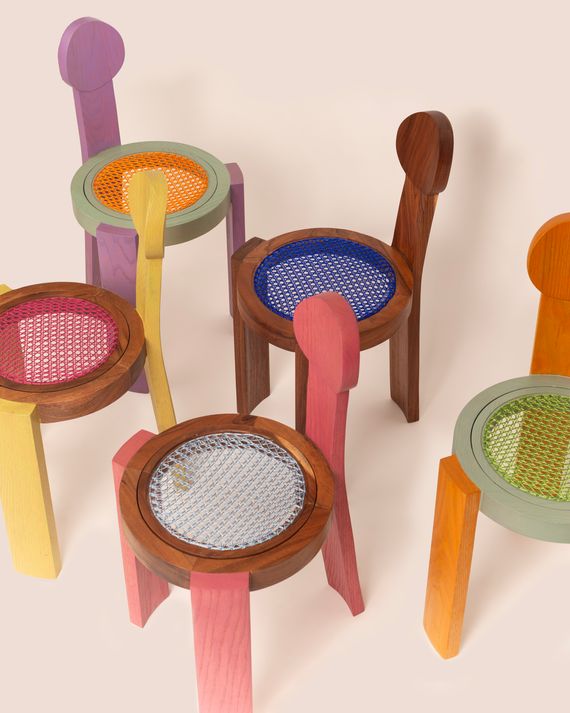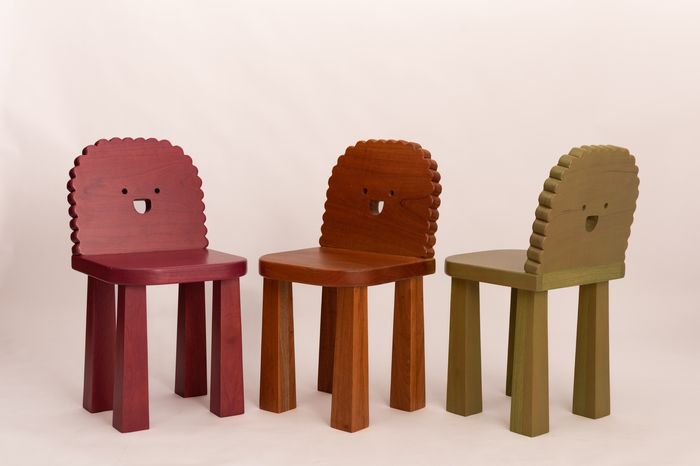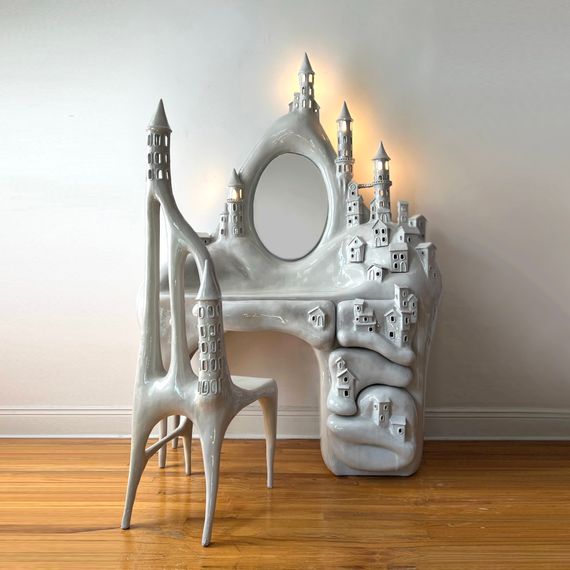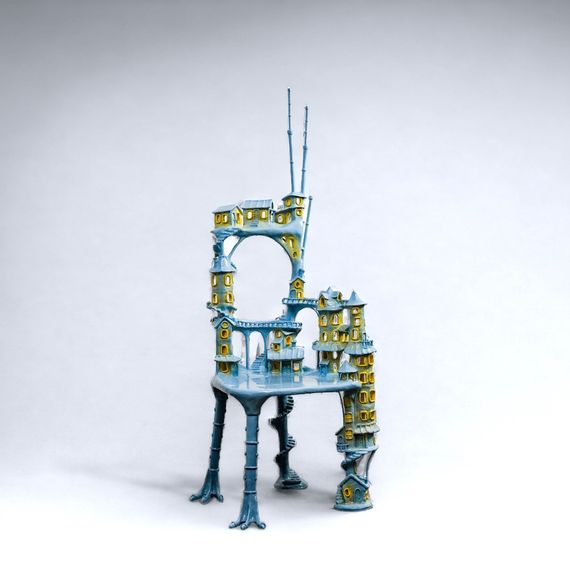The Latest Design-Forward Children’s Furniture
Photo-Illustration: Curbed; Photos: Nicholas Devlin, Víctor Martínez, Carlos Rubio, Tijs Vervecken
There was something unexpectedly charming about the set for Bottega Veneta’s summer 2025 show in Milan, which made a reappearance in December at Design Miami. It wasn’t the clothes on the models (which did evoke this magazine’s but the characters in the audience: a collection of floppy beanbag chairs commissioned by creative director Matthieu Blazy and made by Zanotta, inspired by the 1968 Sacco chair. With 15 animal designs altogether, the show had guests like A$AP Rocky and Julianne Moore sitting on puffy chickens, pandas, and rabbits. It was a reminder that while dripping, anthropomorphic, and lumpy furniture is not out of place in the design world, works that directly borrow from the realm of children’s spaces or stories can feel both elevated and completely delightful. The following are some recent examples.
Salon 94’s installation at Design Miami Paris included La Famiglia.
Photo: Adrien Dirand/Courtesy of Pesce Studio and Salon 94 Design/© Pesce Studio
In April, the world lost a pioneering figure who had challenged the design and architecture orthodoxy since the 1960s with his concept of radical design. It’s not surprising that Gaetano Pesce is included here; his designs were consistently outrageous, whimsical, and childlike, a stand against modernism’s utilitarian aesthetic and principles. Pesce’s last collection, La Famiglia, presented posthumously during the first edition of Design Miami Paris in October, continues this theme, along with his experimentation with hardened fabric, which he first debuted with the Feltri chair in 1987. The body of each chair in this final collection — La Mamma (the Mother), La Cugina (the Cousin), Il Bambino (the Child), and La Piccola (the Little One) — is made out of industrial felt with each character portrayed in the scale and facial expression carved into the back. The Child chair, appropriately, features a wide, crooked grin.
Il Bambino (the Child) and La Piccola (the Little One) chairs by Gaetano Pesce, both felt and resin.
Photo: Adrien Dirand/Courtesy of Pesce Studio and Salon 94 Design/© Pesce Studio
La Cugina Felt Chair (the Cousin) by Gaetano Pesce, felt and resin.
Photo: Adrien Dirand/Courtesy of Pesce Studio and Salon 94 Design/© Pesce Studio
The designer Lukas Cober
Photo: Tijs Vervecken
Lukas Cober’s latest solo show was inspired by the 1963 children’s book Where the Wild Things Are. Shown this past fall at Objects With Narratives, a Brussels gallery, the collection loosely interpreted the spirit of the book with an experimental approach to material and form-making.
The Netherlands-based Cober uses industrial fiberglass cloth layered in resin to create hardened sheets that can be molded into sculptural lamps, benches, and chairs. The Free Form Chandelier resembles a gauzy draped cloth and, together with the Free Form Lounge Sofa, brings to mind the thrill of building forts from bedsheets and sofa cushions. The sofa’s backrest is made with natural green fiberglass, resulting in a crinkled, petrified sheet glazed on the inside with a satin finish outside. It’s a reminder of the unconventional way Cober first got into design, by handcrafting surfboards in his late teens.
Photo: Tijs Vervecken
Photo: Tijs Vervecken
The Lámpara Pasamanos by Cinco x Cinco borrows its visual language from monkey bars.
Photo: Víctor Martínez
Cinco x Cinco is an eclectic Guatemala-based design collective established in 2020, during the early days of the pandemic: Esteban Paredes is an interior architect and pastry chef, Sofía Contreras-Paredes is a textile and fashion designer, Cecilia Díaz works in cultural management and artisanal design, and Manny Rionda is a fashion photographer. “The studio was born from the need to create when no one was free to do so,” says Contreras-Paredes.
Their first collection, The Sum of Small Parts, incorporates familiar structures found in playgrounds from their childhood but rendered in artisanal woodwork and textile techniques. The Lámpara Pasamanos, which borrows from monkey bars, combines chromed metal tubes with sliding Chinautla clay ornaments. The Carro Trampolín is inspired by the diving board with trays crafted in conacaste wood that resemble the different platform levels. Perhaps the most inventive is the Silla Columpio, inspired by traditional hammock swings, which had to appear like it was floating. An oversize arched metal structure holds the handwoven seat made in Santo Domingo Xenacoj.
“It is a bit like child’s play in the sense that you have no limitations,” says Díaz of the process of learning from the artisans and from each other. “The ignorance and lack of knowledge in many of these disciplines [makes you] more daring, like a child.”
The Silla Columpio by Cinco x Cinco was inspired by hammock swings.
Photo: Víctor Martínez
The Clown Chair by Chuch Estudio.
Photo: Carlos Rubio
Chuch is an affectionate Mayan term for something that is adorable, and Chuch Estudio, a design firm based in Mérida, México, is not afraid of that. Architect Aranza García says she wanted to “lighten the load” of the pandemic with a playful approach, which blends tradition with contemporary design. “We are inspired by Mexican design history and everyday objects — colors, textures, the Mexican market, traditional crafts, local architecture, and the imperfect beauty of handmade objects,” she says.
The Clown Chair, made in tinted oak and tzalam wood, has interchangeable seats handwoven in nylon thread with over 50 colors to choose from and features a traditional weaving technique that normally uses the fiber of a vine that grows in the Mayan jungle. An earlier design, the Sol Chair, is more unabashedly cute. It’s inspired by a butter cookie from southern Mexico that comes in the shape of a flower with a smiley face in the center, a staple in García’s childhood home. The chair, like that cookie, “is a tribute to those small but meaningful moments and the warmth of family connections,” says García.
The Sol Chair by Chuch Estudio.
Photo: Carlos Rubio
Castle Vanity by Nicholas Devlin, a custom commission.
Photo: Nicholas Devlin
Photo: Nicholas Devlin
“Isn’t it crazy that the entirety of Whoville in The Grinch existed inside of a singular snowflake?” Brooklyn-based designer Nicholas Devlin asks. It’s the kind of question that he might explore in one of his own pieces, which often harbor entire worlds of their own. Castles, cottages, and villages from fairy tales like those of the Brother Grimm are re-created at the scale of furniture, sculpted in fortified plasters, wood and metal framing, epoxies, fiberglass, and acrylic paint. His Castle Vanity from 2023 is one of his most recent works, finished in a glistening white with drawers hidden behind tiny cottages, custom-made for Nicole Abe Titus. This is a newer direction for Devlin, who’s made drippy mirror frames and squiggly lamps, although much of his work does sit solidly in the world of feeling enchanted and otherworldly.
“I think there’s often a sense of shame or embarrassment to liking something we think we’re not supposed to like,” Devlin says. “There are so many aspects of the world that are unforgiving and cold, so I think it’s especially important to live with and enjoy things we actually love.” Some of Devlin’s favorite commissions include a garden folly for Harry Heissmann and a powder-room collection that includes a cottage-shaped toilet paper dispenser and a melting candelabra sconce for Eli Mizrahi.
See All


